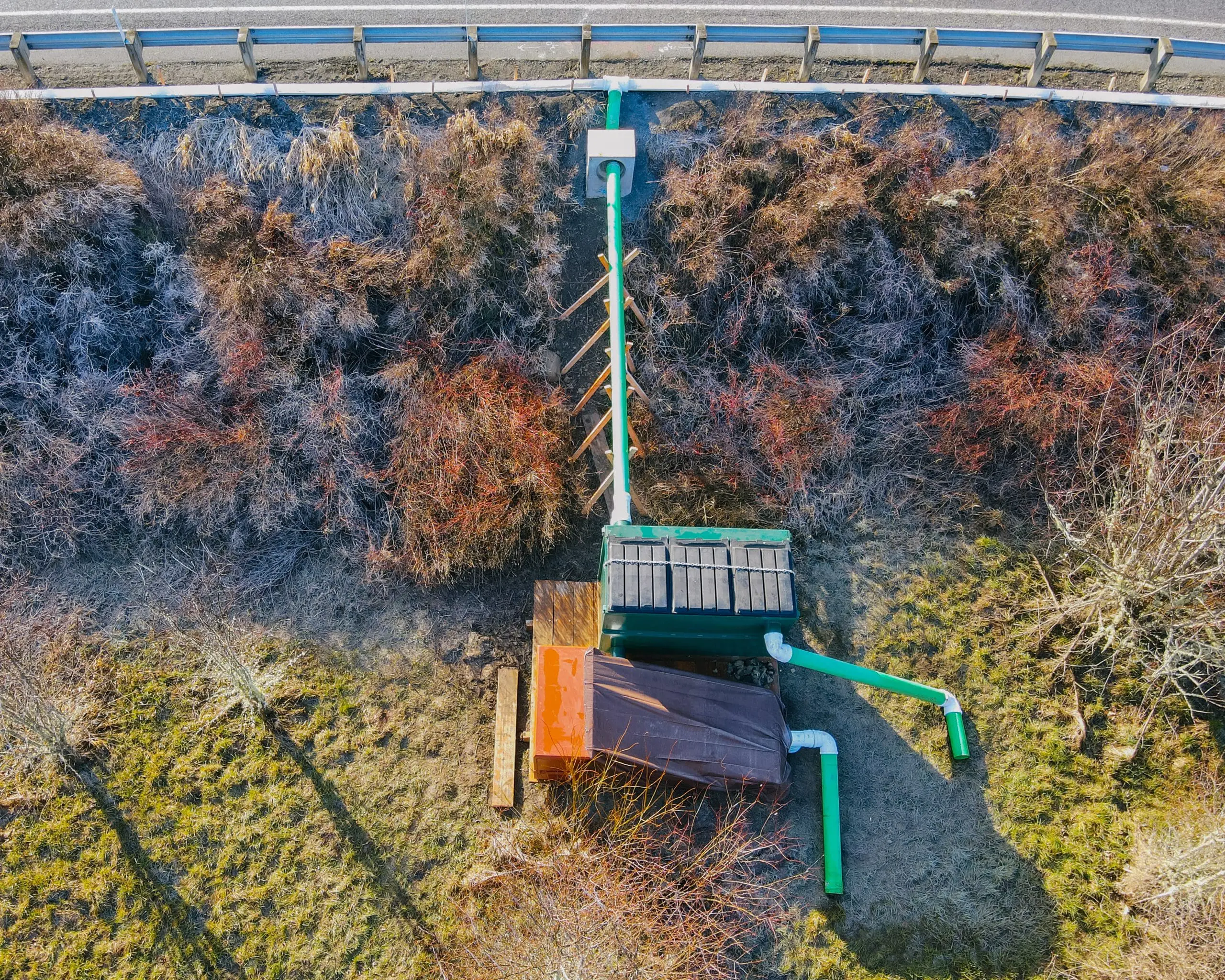
Piloting a New Way to Manage Stormwater in Ohop Valley
In the late 1800s, settlers converted the Ohop Valley to pastures and farm fields, turning a once meandering Ohop Creek into a straight-flowing ditch to drain the valley for dairy farming. The process drastically transformed the landscape, reducing its ability to provide spawning and rearing habitat for historical salmon populations, including chum, pink, coho, and Chinook salmon, as well as steelhead and cutthroat trout. As a major tributary to the Nisqually, the loss of this habitat was detrimental to these salmon and has contributed to decreased populations and the listing of Chinook and steelhead as threatened under the Endangered Species Act. Substantial work has been done to address the historic habitat degradation, however new science points to another more modern threat to salmon recovery.
Over the past 15 years, watershed partners have worked together to implement the Lower Ohop Creek Restoration Project, transforming the lower section of Ohop Creek and the surrounding valley, converting it back to what it looked like prior to settlement. Completed over two phases of construction, over 2 miles of Ohop Creek have been remeandered, derelict structures and invasive plant species removed, and large woody debris placed throughout the valley floor. As part of the restoration, nearly 200,000 native trees and shrubs have been planted across 180 acres of floodplain.
The restoration of Ohop Creek is a major step in recovering Nisqually salmon, but stormwater pollution that comes of off roadways has been recently identified as a major threat to recovery. Some of the harmful components of stormwater include heavy metals and microscopic tire particles. Traffic volume along Highway 7, which crosses Ohop Creek near the Town of Eatonville, has been on the rise due to population growth of the Puget Sound region resulting in more of these chemicals entering Ohop Creek. According to Washington State’s Department of Transportation’s 2019 annual average daily traffic data, assuming four tires per vehicle, roughly 12 pounds of microscopic tire particles are released at this site throughout the year. Scientists have recently discovered that these tire dust particles contain a chemical known as 6PPD-Quinone, which causes mortality in salmon, especially coho, in low quantities. The Nisqually Indian Tribe and Long Live the Kings have partnered with Cedar Grove, an environmental solutions company, to pilot a mobile biofiltration system designed specifically to capture and filter stormwater run-off from Highway 7.

In January 2022, the unit was installed between the two bridge crossings along Highway 7, in close proximity to Ohop Creek. The size of the unit allows for the collection of 91% of the roadway run-off. With each significant rain event, the system automatically collects water quality samples at three locations: where the run-off enters the filtration system, the middle of the system, and at the outlet where the water is discharged onto the Ohop Creek floodplain. The water samples allow researchers to test the effectiveness of Cedar Grove’s system at removing harmful contaminants. These samples are tested for their chemical and toxicological composition, including heavy metals, ammonia, dissolved organic carbon, total suspended solids, nitrates, nitrites, total phosphorus, and polycyclic aromatic hydrocarbons (PAH’s). Additionally, the composite samples are shared with Washington State University to assess biological impacts and University of Washington’s Tacoma Campus to test for 6PPD and 6PPD-Quinone.

The biofiltration system is mobile, relatively inexpensive, and scalable for different stormwater filtration needs. If the system can safely remove harmful chemicals and prevent them from polluting salmon streams, don’t be surprised if you see the use of this system become widespread. In the very near future, stormwater filtration systems will go hand in hand with habitat restoration as a principal salmon recovery tool.
Fall 2022 Update:
By the end of April, the Ohop biofiltration system had encountered two significant rain events. As of November, preliminary data analysis shows positive signs that this system is effective at reducing heavy metals, water toxicity, and 6PPD-quinone to levels that are not detrimental to salmon. We hope to continue this study and look forward to sharing more results as they are available!
Learn more from the Northwest Treaty Tribes here.
Come along on a tour of the project site (via LLTK’s Instagram)!
—————————–
Authors: Ashley Von Essen is the Lead Entity Coordinator at the Nisqually Indian Tribe. Ashley Bagley is a Project Manager at Long Live the Kings. This article was originally published in the Summer 2022 issue of Yil-Me-Hu, the Nisqually Watershed Salmon Recovery newsletter. Read the full issue here.
Project partners include: Nisqually Indian Tribe, Long Live the Kings, Cedar Grove, Fremont Analytical, Herrera Environmental Consultants, Nisqually Land Trust, University of Washington at Tacoma, Washington State Department of Transportation, Washington State University at Puyallup.
Financial support for this project was provided by: Nisqually Indian Tribe, Puget Sound Stewardship and Mitigation Fund, Royal Bank of Canada, Sustainable Path Foundation, and Washington Sea Grant.